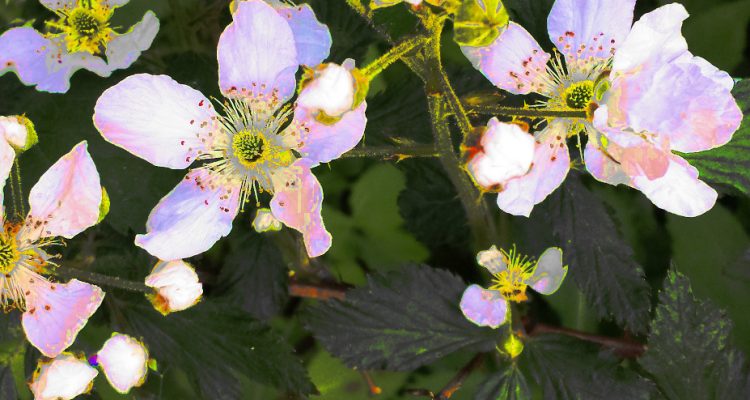Creek-Side Flora
This time of year is the perfect time to go out looking for interesting plants. There are so many to find, and flora is constantly changing. I especially enjoy identifying those with special uses and properties: some are edible, some relieve itching, some smell good, and some are just pretty. There are so many things to learn about plants. I encourage everyone to take some walks to appreciate the different plants that are around us, and maybe even identify some! Here are a few plants I found while taking an evening walk along Gillespie Run near Dallas, WV:
OXEYE DAISY (Chrysanthemum leucanthemum)
 Daisies are pretty flowers, but are often thought of as a pest. They tend to take over fields, and are actually from Europe. Supposedly their seeds can stay viable in the soil for up to 39 years.
Daisies are pretty flowers, but are often thought of as a pest. They tend to take over fields, and are actually from Europe. Supposedly their seeds can stay viable in the soil for up to 39 years.
COMMON BUTTERCUP (Ranunculus acris)
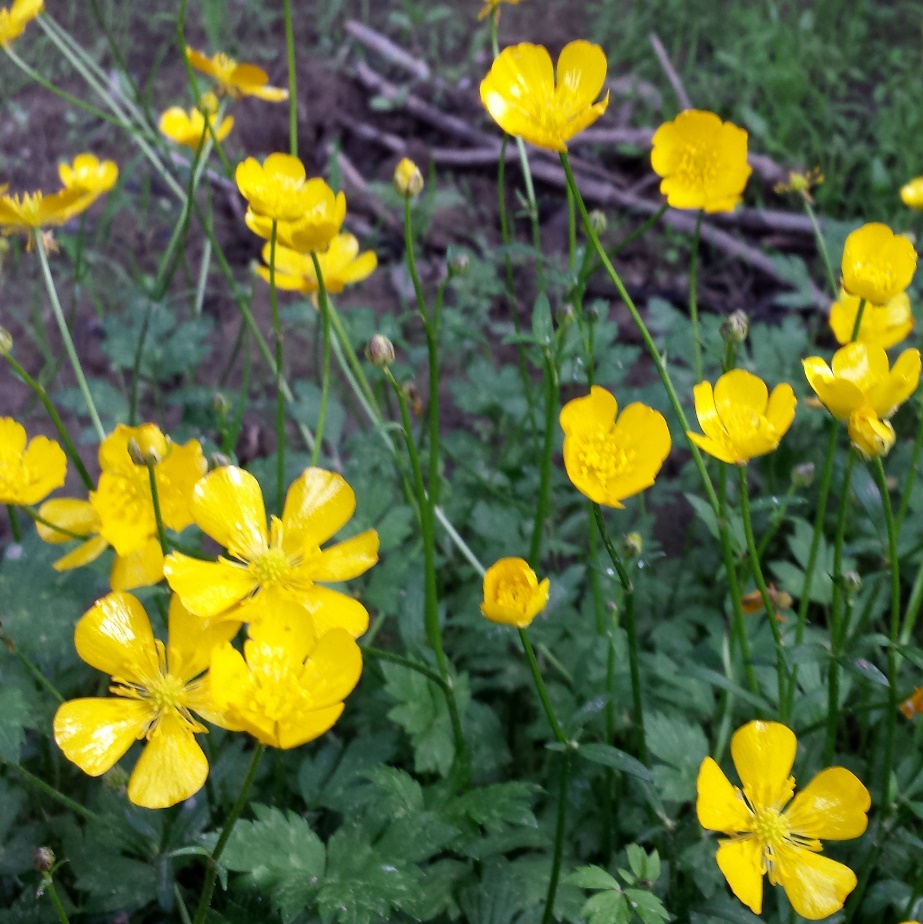
The common buttercup has very glossy petals. I was told if you hold one of these flowers under someone’s chin and the chin reflects yellow that means that person likes butter. But who doesn’t like butter? It is commonly found in pastures because it is poisonous to animals if eaten and therefore avoided by them.
RED CLOVER (Trifolium pratense)
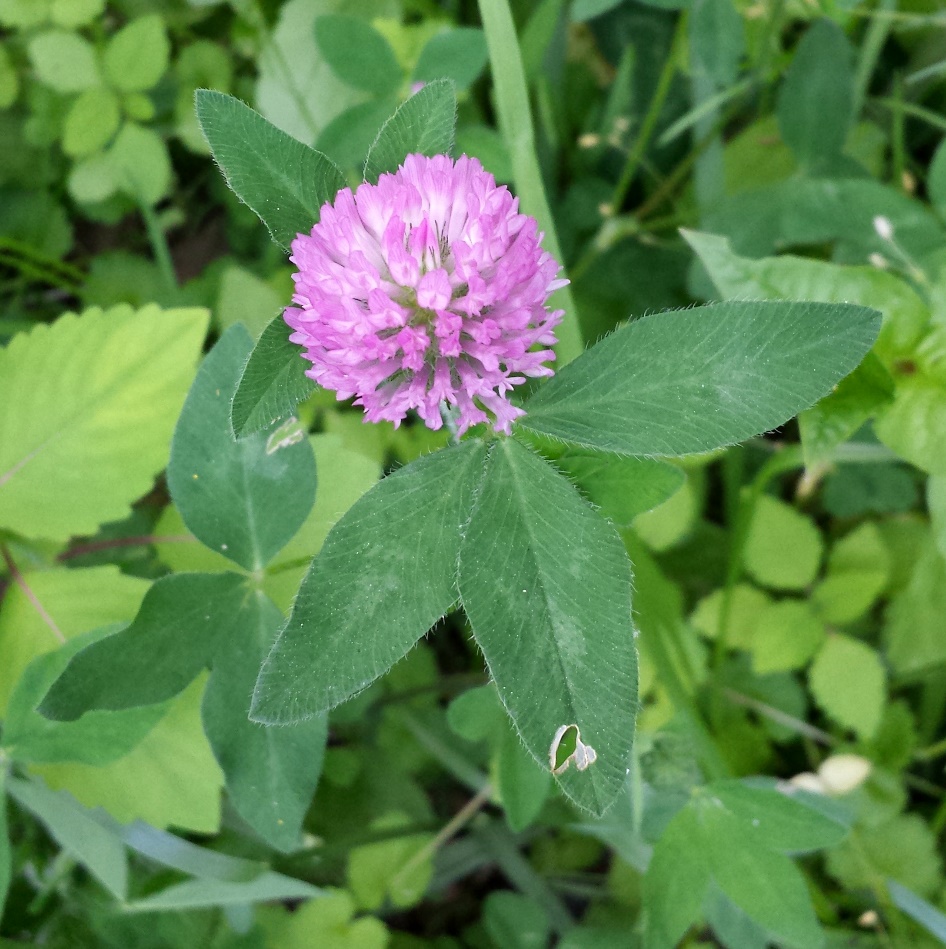
I often eat the red clover flowers if I find them. They have a sweet taste if there isn’t too much dirt on them. Red clover flowers contain phytoestrogens, compounds similar to estrogen. It has been studied to see if it has any legitimate medicinal uses, but there seems to still be a lot of debate about that. Traditionally, it has been used for menopausal symptoms, asthma, and a few other ailments. There is also a suspicion that eating a lot of these flowers may increase risk of uterine cancer because of the phytoestrogens.
Blackberry (Rubus allegheniensis)
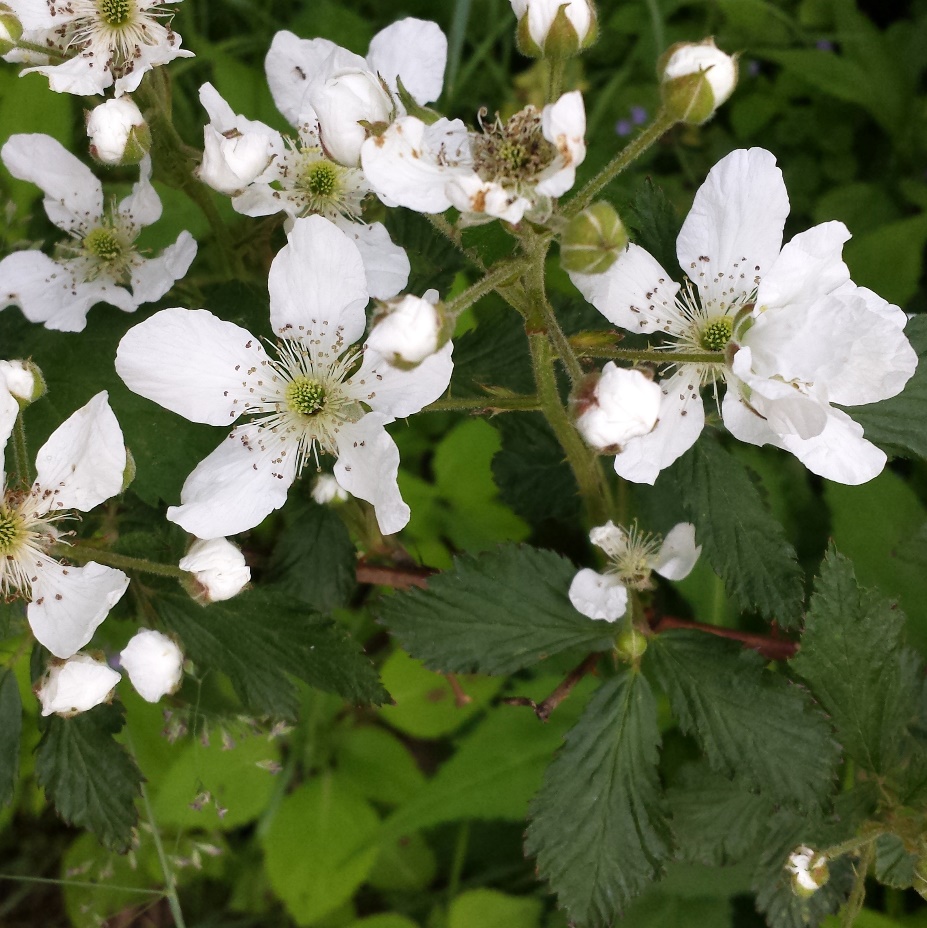
This thorny bush will yield delicious aggregate berries later on in the year. For now they have the delicate white flowers that will lose their petals and turn into fruit. It is very similar to black raspberry bushes, which explains why they’re in the same genus. A distinct difference is black raspberry bushes have whiter looking stems.
Christmas Fern (Polystichum acrostichoides)
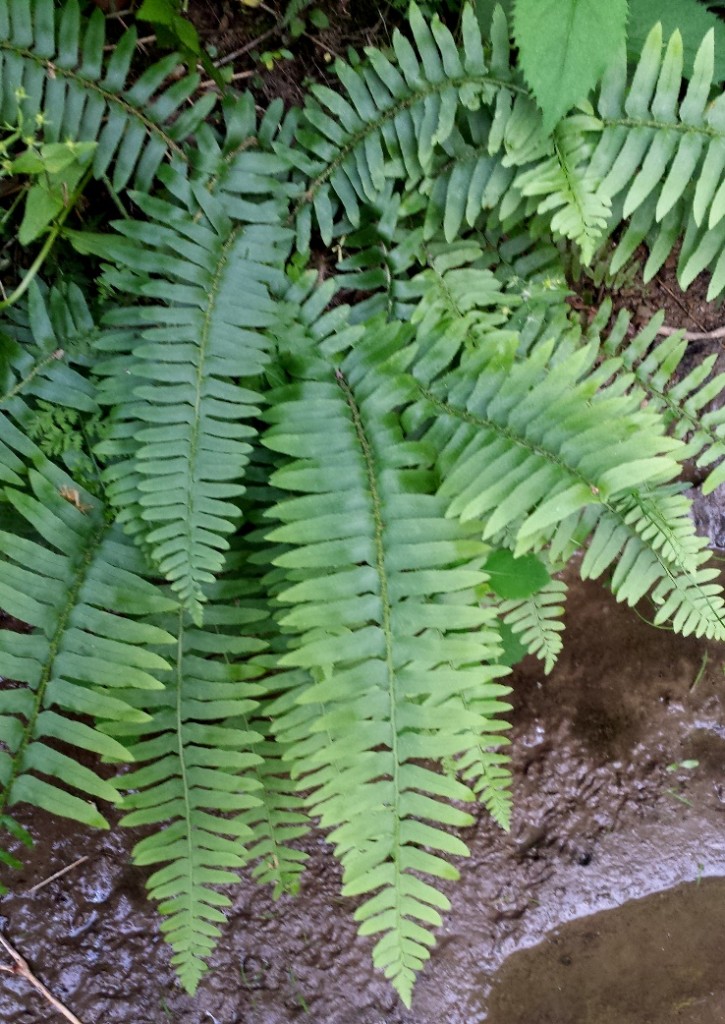
Christmas ferns are easy to identify. They have darker green leaves and simple pinnate foliage. These ferns are evergreens that will grow in most environments. They’re called Christmas ferns because European settlers used them to decorate for Christmas.
Garlic Mustard (Alliaria petiolata)
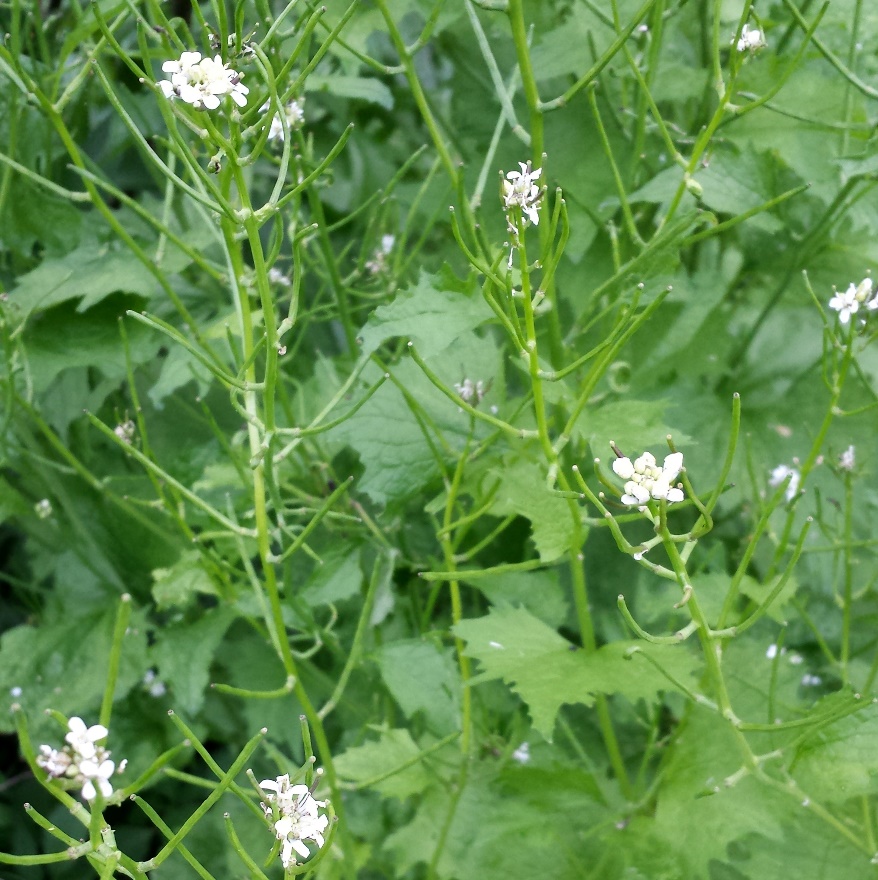
Garlic Mustard is an aggressive invasive species introduced by settlers as a culinary and medicinal plant. It shades the ground so other plants don’t get sunlight, and it also releases a biochemical to reduce growth of native species, namely fungi. Even if it’s pulled, the dead plants can still release the biochemical. In my opinion, it tastes terrible too.
Sources:
Alden, P. (1999). National Audubon Society Field Guide to the Mid-Atlantic States. New York: Knopf.
Jacobs, J. (2008). Ecology and Management of Oxeye Daisy. United States Department of Agriculture.
(2003) Buttercup. The Macmillan Encyclopedia.
(2012) Herbs at a Glance: Red Clover. National Center for Complementary and Alternative Medicine (US).
Fischer, T. (1999). Christmas Fern. Horticulture, The Art of American Gardening. Volume 96, Issue 8. Pg 50.
Keesing, F., Oberoi, P., Vaicekonyte, R., Gowen, K., Henry, L. (2011). Effects of Garlic Mustard(Alliari petiolate) on Entomopathogenic Fungi. Ecoscience. Volume 18, Issue 2.
The author is a junior Environmental Studies major at WVU.


